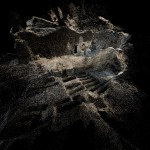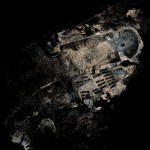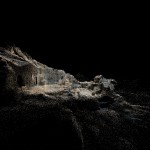This is the only case where I disagree with my namesake; I agree that the sight of the creature being found, pursued, and hunted would drive thoughts of love from the mind of a lover; but I declare that to see her caught is neither a pleasant sight nor exciting but upsetting rather. I do not think that a lover would forget his love for this.
Arrian: On Hunting, Section 16 (trans. Phillips and Willcock 1999, 111)
Monthly Archives: October 2011
Thesaurus d’Épigraphie Islamique Updates
Aside
The Thesaurus d’Épigraphie Islamique was recently updated and now includes
- Issue No. 10: Inscriptions from South-East Asia (Burma, Brunei, Cambodia, China, Indonesia, Malaysia, Mongolia, Philippines, Thailand, Vietnam)
It is now that much easier to find something like the Arabic stela excavated at Phnom Bakeng, probably carved by a local craftsman unfamiliar with the Arabic alphabet!
Access to the searchable database is free once you’ve created an account. The new material completes content already in the database:
- No. 1: Morocco, Algeria, Tunisia and Libya
- No. 2: Arabian Peninsula (Saudi Arabia, Yemen, Oman, Bahrain)
- No. 3: Central Asia (Uzbekistan, Kazakhstan, Kyrgyzstan, Tajikistan, and Turkmenistan)
- Nos. 4 and 5: Egypt
- No. 6: Indian world (Pakistan, India, Bangladesh, Sri Lanka, Maldives)
- Nos. 7-9: Sub-Saharan Africa, Iraq, Western Europe (Spain, Portugal, Italy, Malta, France)
A Converted Temple in Cappadocia?
One of the more interesting and less well-understood sites that we visited was a Byzantine church complex that appears to have been a renovation to an earlier, polytheistic temple. As I understand it, the bases of the four piers in the church are uncharacteristic of the Byzantine cave churches.
The upper part of the complex has eroded and collapsed, leaving much of it exposed. There are still several adjoining cave-rooms, but the exposed portion makes for a beautiful photosynth.
Kılıçlar Kilisesi
This was my favorite church of the many we visited during the two week Cappadocia in Context program. Robert Ousterhout described the faces as having a very sweet quality, which I think is accurate. They’re like serene cartoons. Judith Cave (it’s destiny) wrote a dissertation on the church in 1984 — The Byzantine wall paintings of Kiliçlar Kilise: aspects of monumental decoration in Cappadocia — but I haven’t been able to get my hands on a copy through ILL.
When we visited, the building had been closed for almost five years after a restoration project was begun and abandoned. The wooden scaffolding was still up, however, so I was able to get incredibly close to the ceiling paintings. Unfortunately it was too tight to get the establishing shots necessary for a good photosynth. For the sake of conservation I didn’t want to use a flash, so most of the photos are too dark to be usable. A few turned out pretty well, though.




